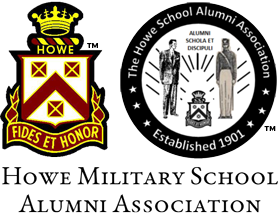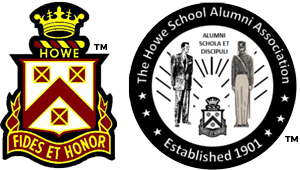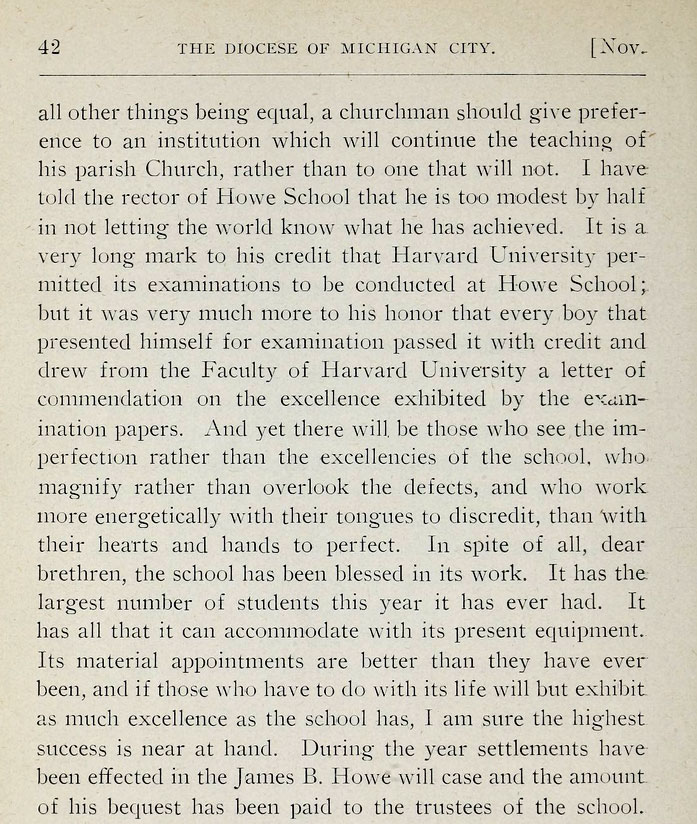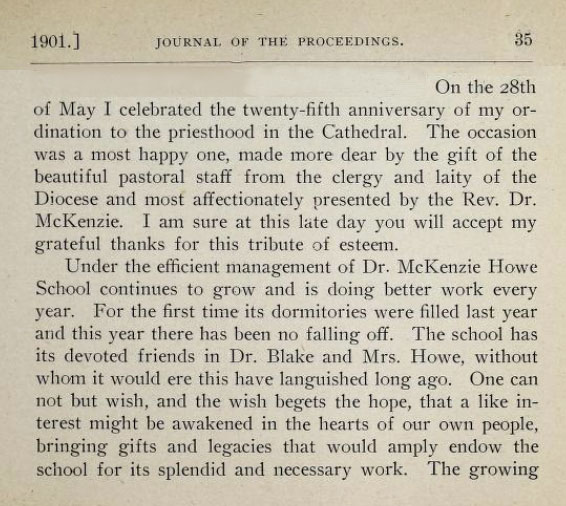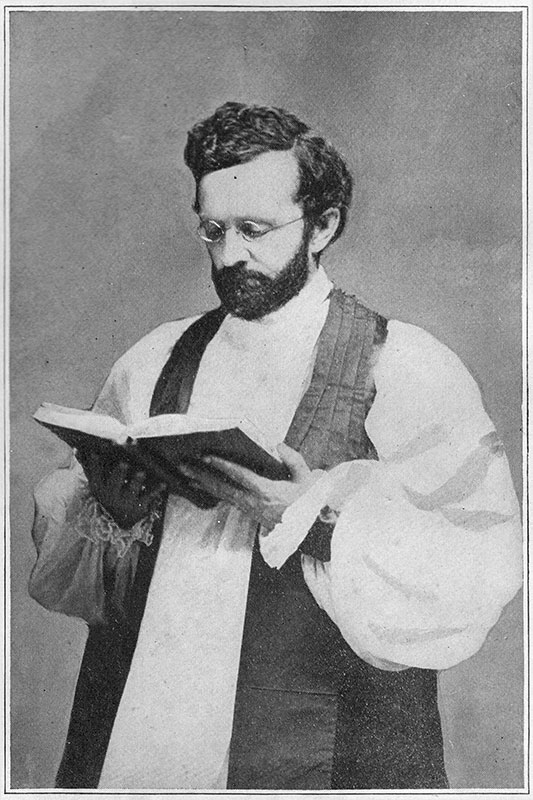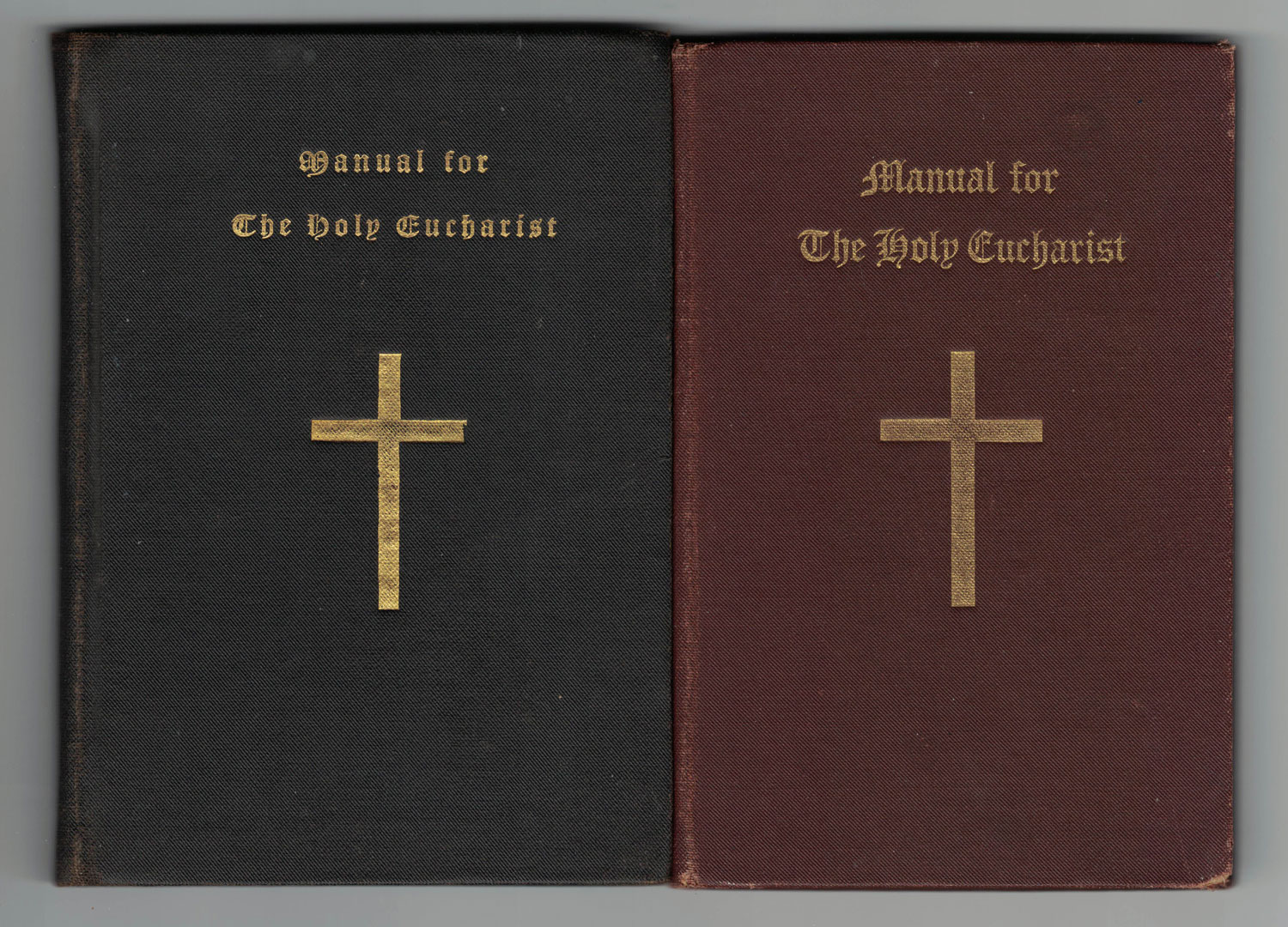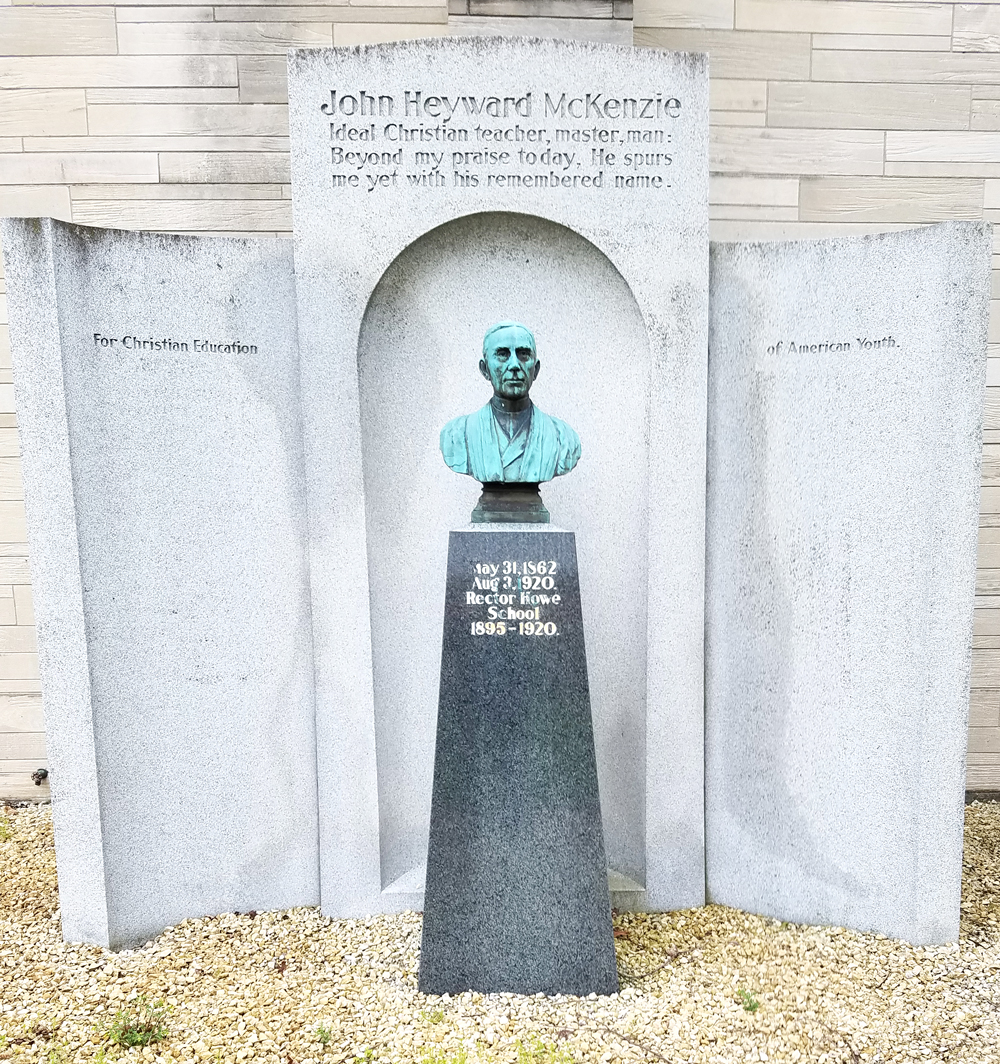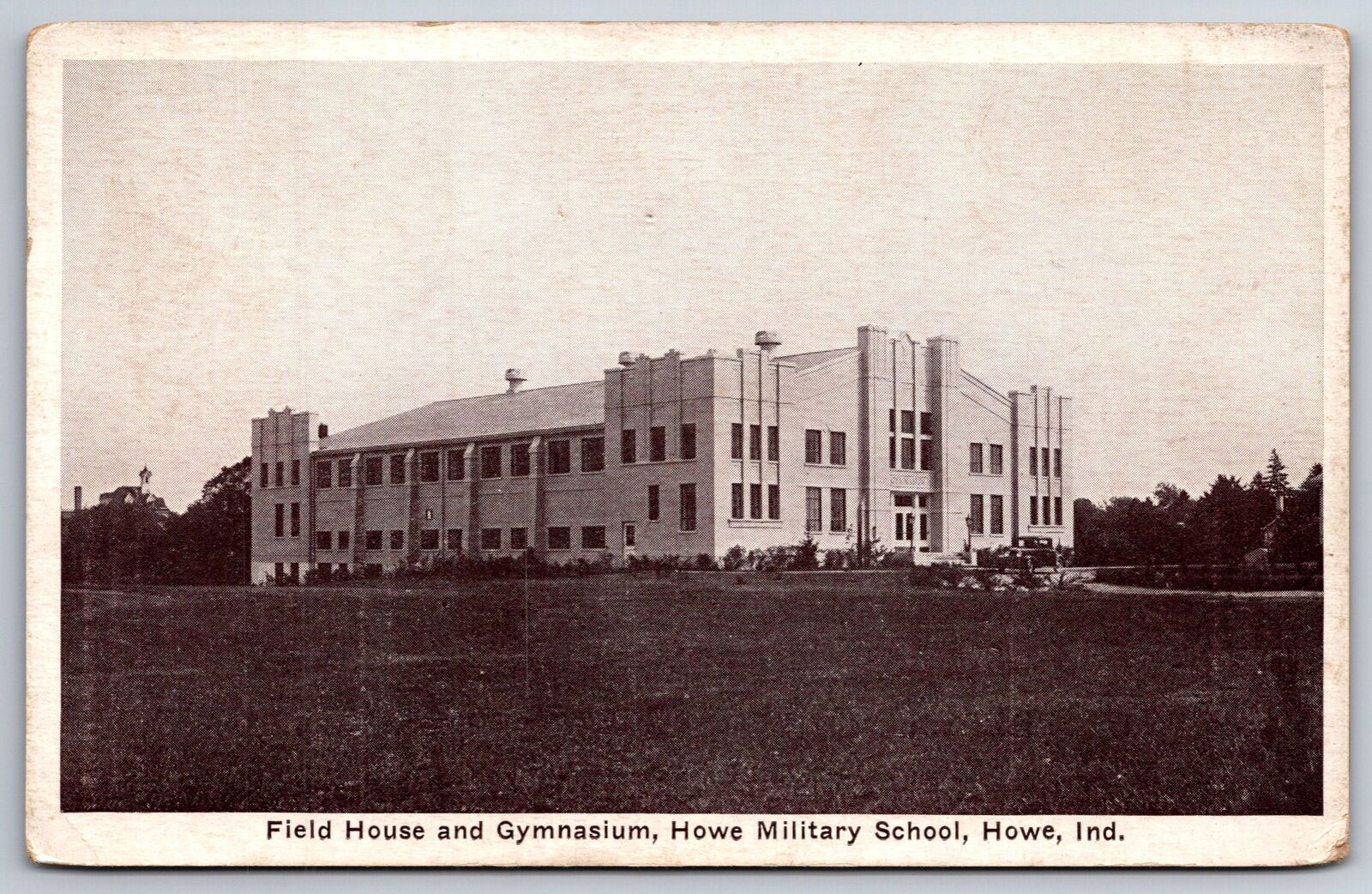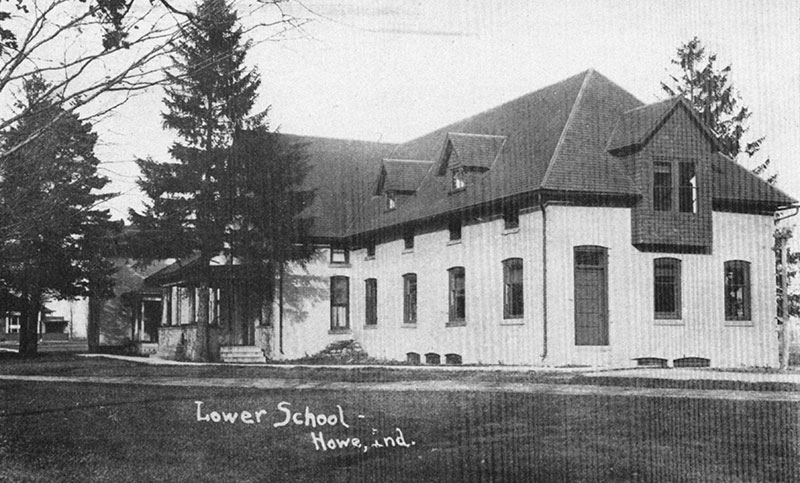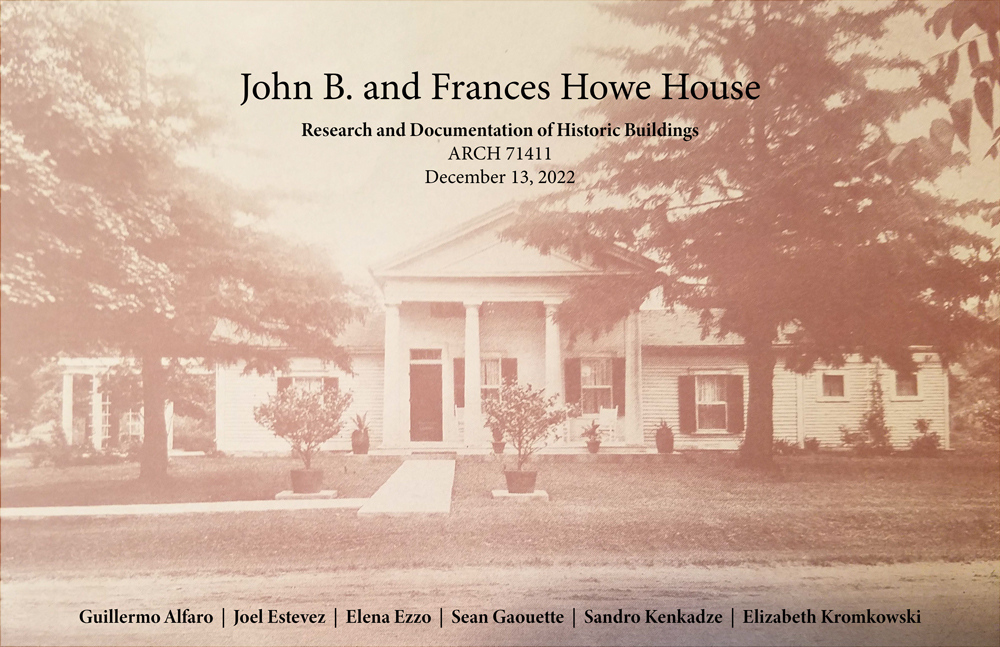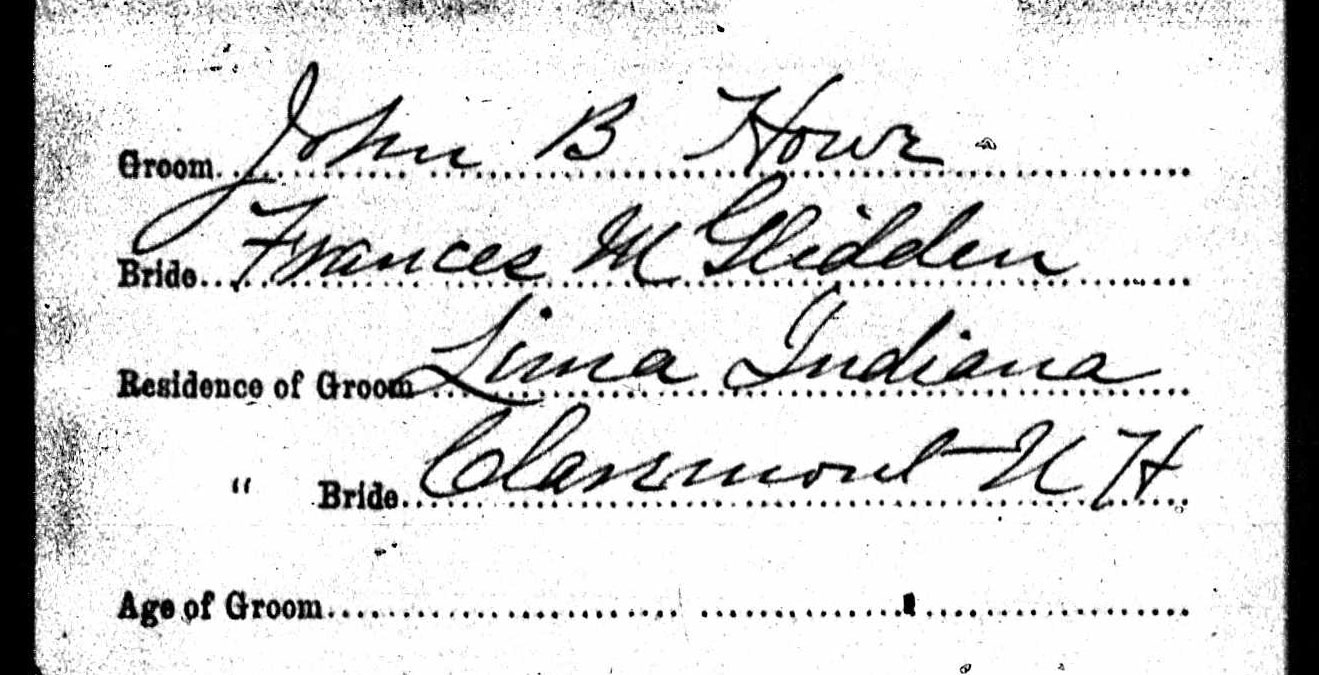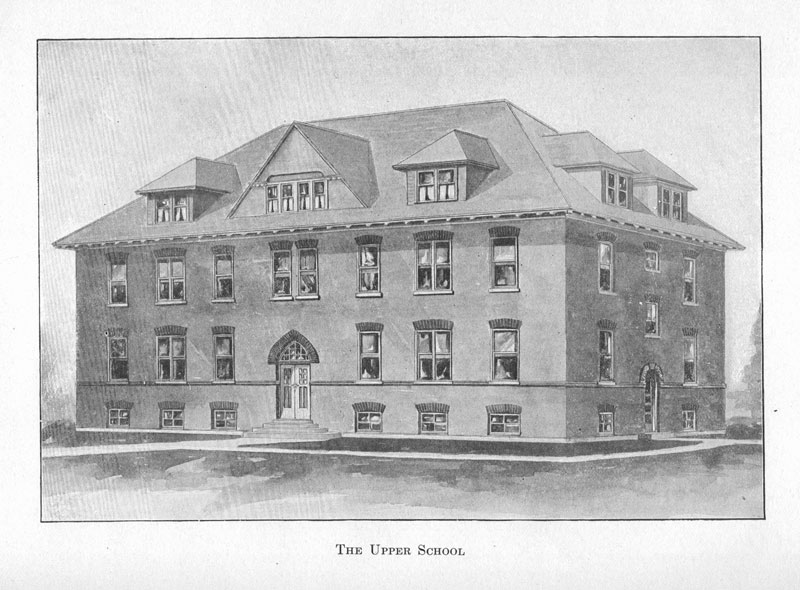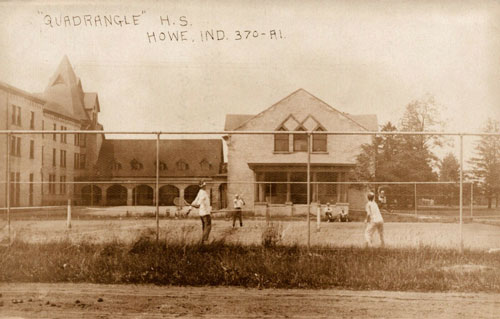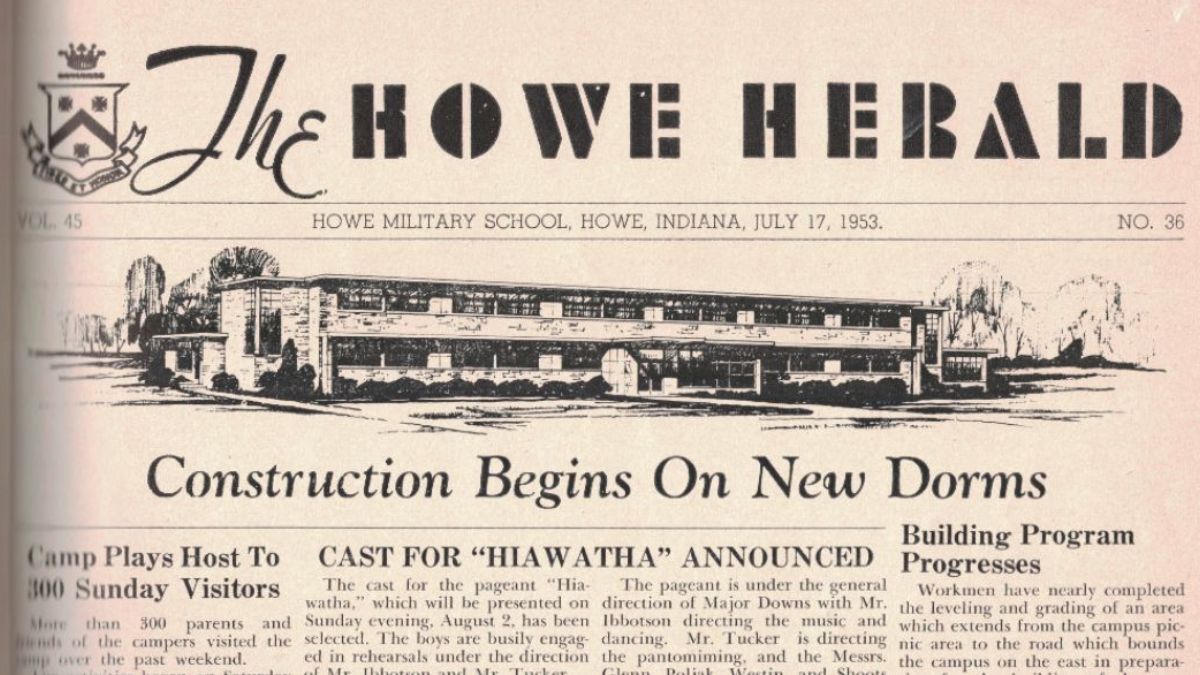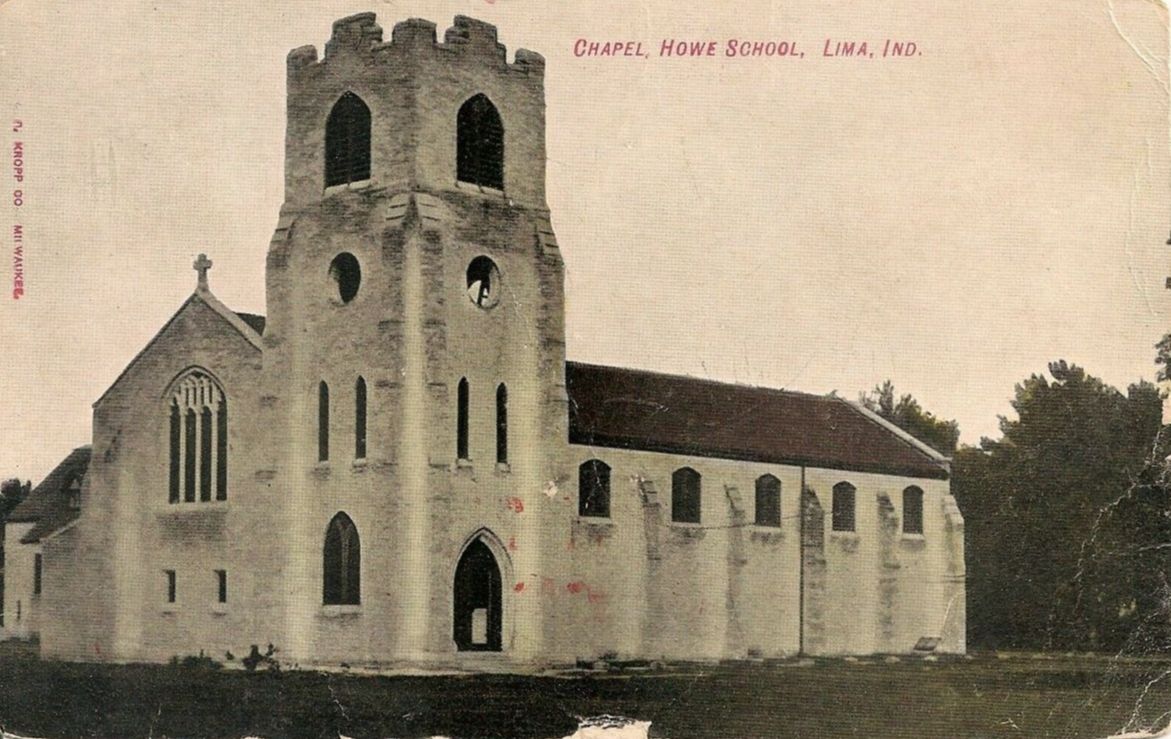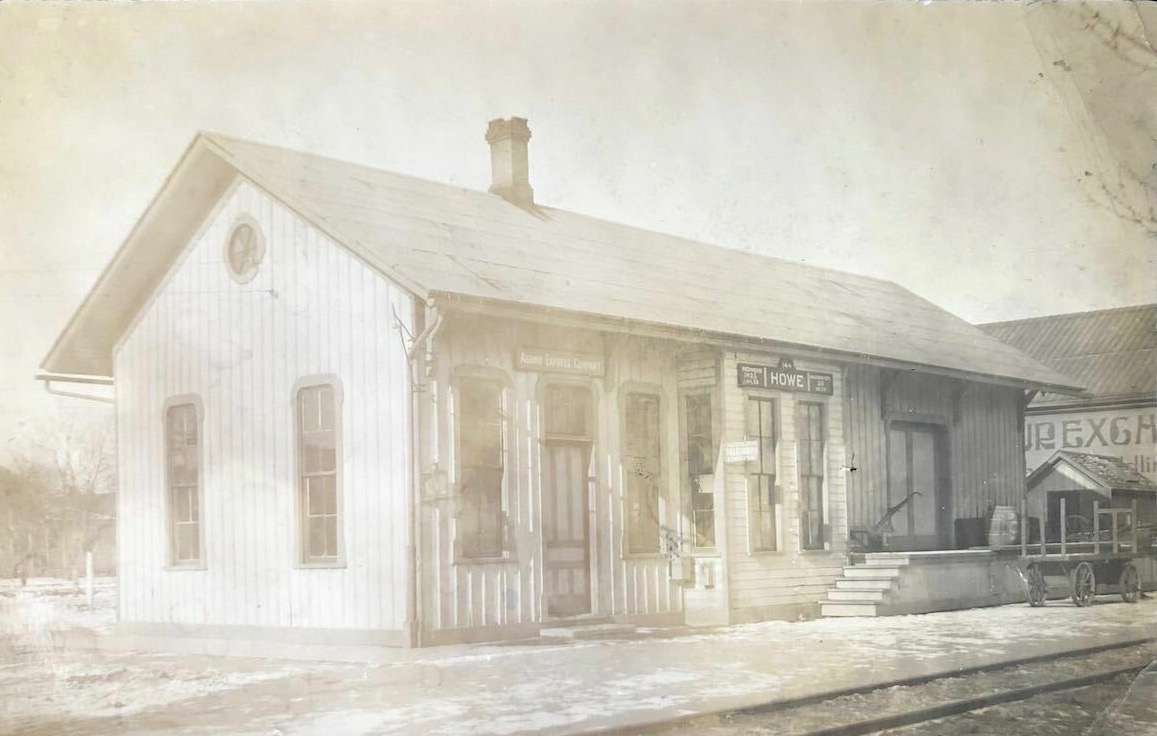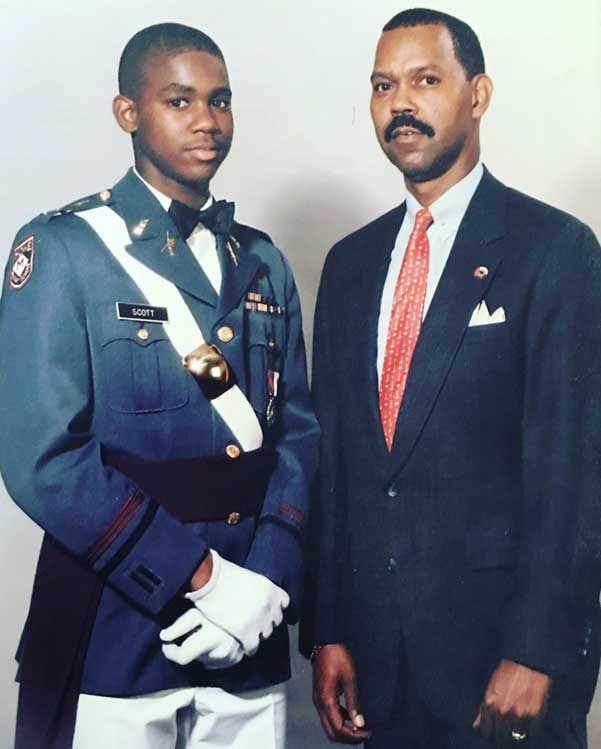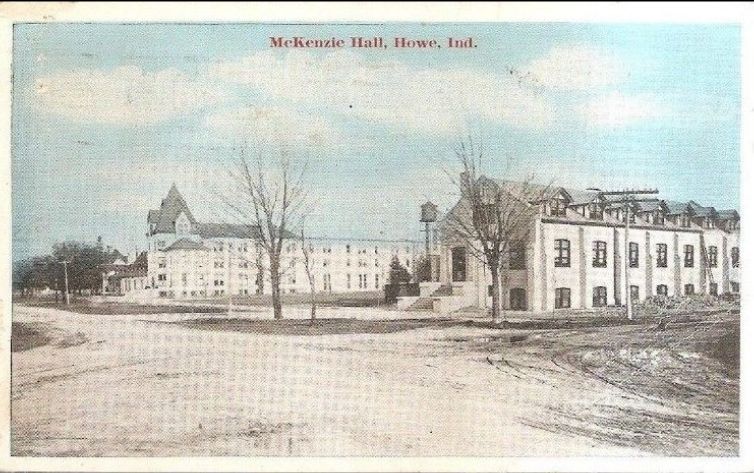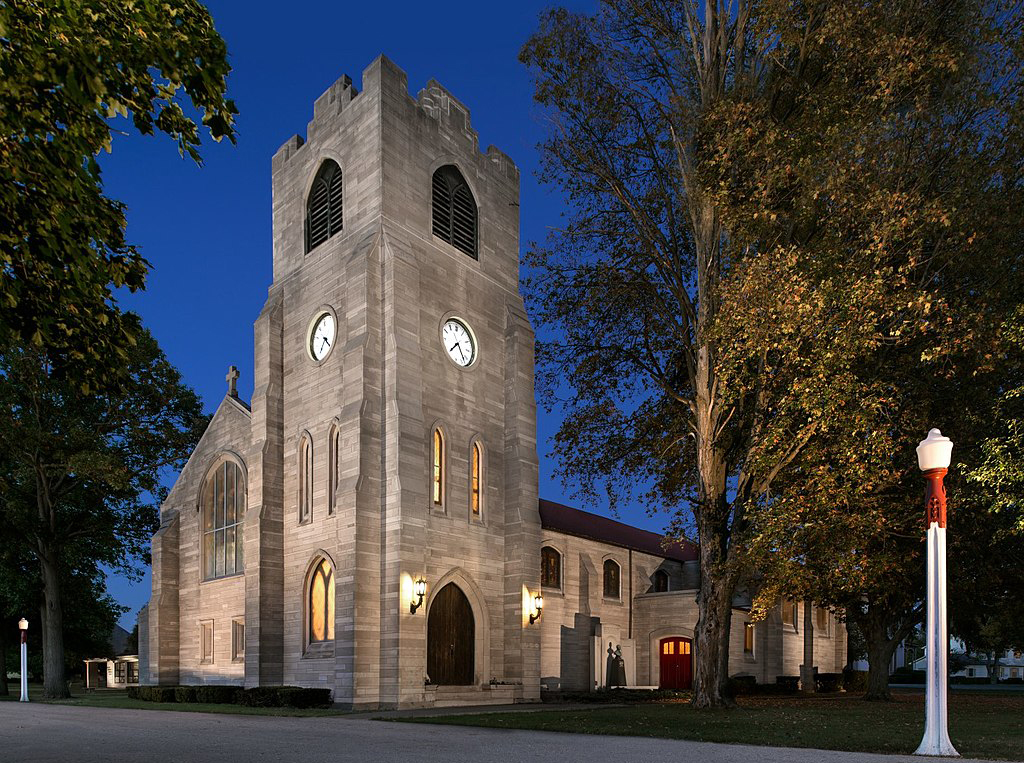
History of Howe Military School™
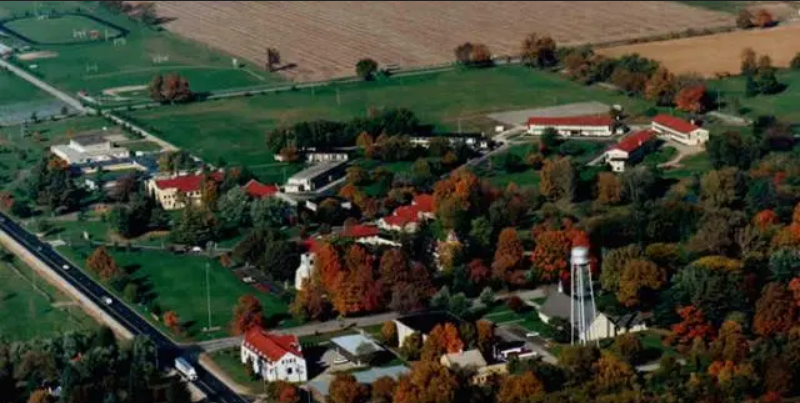
Howe Campus 2019
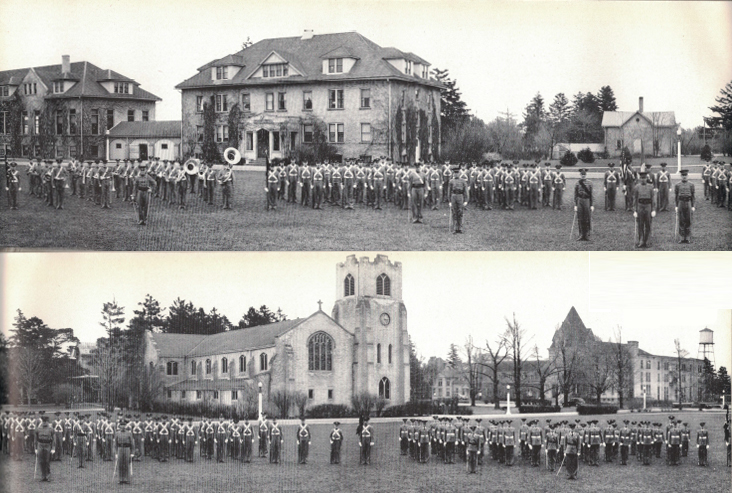
Howe Campus 1940
Howe Military School™ was founded in 1884 with a bequest by John Badlam Howe, a prominent banker, lawyer, and politician, who had moved to the little unincorporated hamlet of Lima, Indiana, in 1833. He first lived in a two-room log cabin, teaching school in one room and living and studying the law while he kept his horse in the other room. In 1846 he brought his new wife, Frances Marie Glidden Howe, to Lima and built a home for them, the Greek revival frame building still standing at the east end of the former campus. A devout anglo-catholic Episcopalian, John Howe’s will left three $10,000 bequests to the Church: one to establish a grammar school for boys at Lima, another to Nashotah House, then as now the foremost anglo-catholic seminary in the U.S., and a third bequest to St. Mark’s Parish, Lima (now Howe) for a new church.
His widow Frances and half-brother, James, worked with the Bishop of Indiana to establish Howe Grammar School in 1884. In 1895 the Rev. John Heyward McKenzie became Rector, having leased the School from the Diocese. In the 1919 catalog, parents are told that “Payments should be made by draft on New York or Chicago, payable to J. H. McKenzie, Rector”, not to Howe School™. He replaced the first Rector, the Rev. Charles Spaulding. Dr. McKenzie had previously headed Ohio Military Institute and, for its first year, Culver Military Academy. Dr. McKenzie was a devout anglo-catholic priest and dynamic leader and fundraiser, whose powerful religious and administrative example was still a campus presence after his passing in 1920, until the end of the 20th century. All of the School buildings visible in the 1940 photo above were built by Dr. McKenzie’s fundraising, including the exquisite St. James Chapel, which has one of the finest liturgical interiors in Indiana. Dr. McKenzie converted Howe to a military school in 1895. Although the catalogs and letterheads said “Howe School”, the 1896 minutes of the Diocesan Annual Meeting called it Howe Military School™.
In the Journal of the Second Annual Council of the Diocese of Michigan City, November, 1900, page 42, Bishop White, in his address, praised Dr. McKenzie for bringing Howe to the very favorable attention of Harvard University; Dr. McKenzie had become Rector just five years earlier, 1895.
St. James Chapel was funded initially by a bequest of $10,000 from James Howe, a banker and lawyer like his half-brother. He also funded the construction of Howe Hall, the western leg of the u-shaped “Quadrangle” which actually had only 3 sides, east, north, and west. James Howe was also a devout anglo-catholic, gifted with musical ability which he applied to the study and performance of anglo-catholic service music. The history of St. Mark’s Parish says he kept the key to the parish organ console on his person at all times.
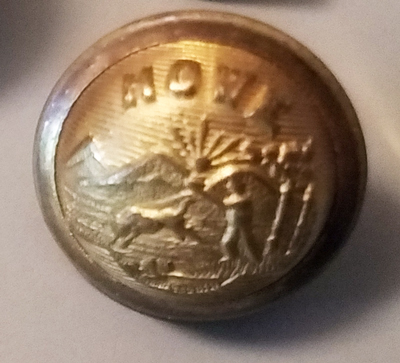
The first Howe uniform buttons just said “Howe” over a bas-relief of the Indiana State Seal.
After the death of James Howe, Mrs. Howe, her attorney Aquila Jones, and her nephews, Dr. Clarence Blake and Percy Dwight, assumed major roles in guiding the School. When the Diocese of Michigan City separated from the Diocese of Indiana, Mrs. Howe insisted that the School ownership be transferred from the Diocese of Indiana to a new corporation, Howe School™, which happened on 30 November 1898, as recorded in the School Trustees’ Minute Book. In the Journal of the Third Annual Council of the Diocese of Michigan City, November, 1901, page 35, Bp. White, in his address, praised Dr. Blake and Mrs. Howe for their support of our School.
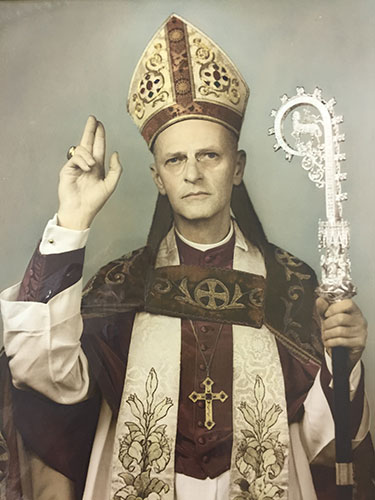
The pastoral staff mentioned by Bp. White was, and is, still carried by the Bishop of Northern Indiana. The best pic we have of this staff is Bp. Gray’s here.
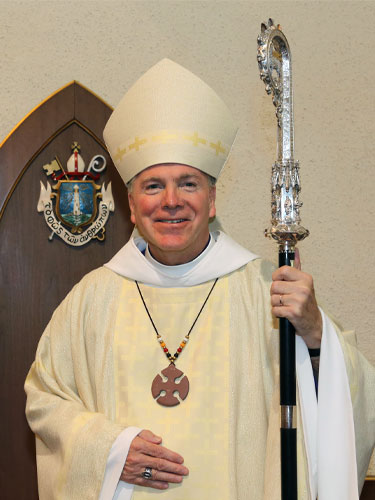
Bp. Douglas Sparks, the incumbent Bishop of Northern Indiana, holds the beautiful crosier (pastoral staff) ~120 years after it was presented to Bp. White.
Dr. McKenzie’s hand-picked successor was the Rev. Charles Herbert Young, who was also a devout anglo-catholic and successful administrator. White Hall (Lower School, grades 5-8), the Gymnasium, and the Power Plant were constructed during his tenure. The former Lower School building was remodeled into the Administration Building. His two daughters were also important to Howe’s history: Katharine married Burrett B. Bouton, who was superintendent from 1934 to his passing in 1963. Their oldest son, Larry, was a Trustee for many years. Fr. Young’s daughter Elizabeth married Howard Downs, long-time history teacher in the Upper School and Principal of the Lower School.
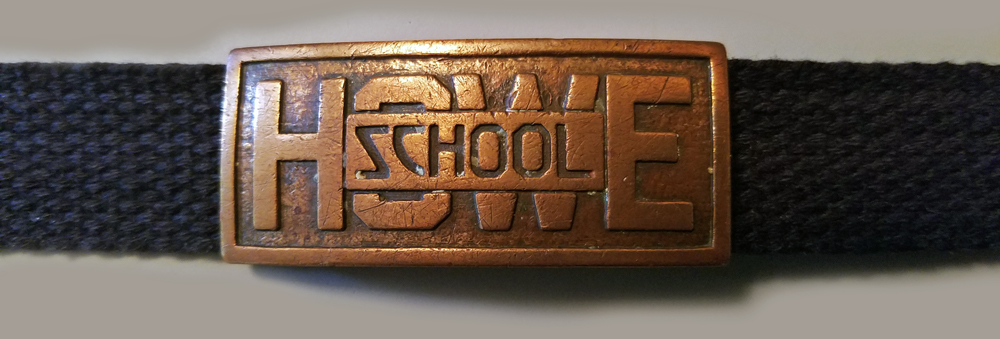
In 1934 Howe got its first lay (not clergy) head of school when Burrett B. Bouton was named Superintendent. Bouton faced two major challenges during his tenure: maintaining enrollment during the Great Depression and Howe’s great fire when the old academic building burned in 1946. Replacement of the Academic Building was difficult; the new building was not dedicated until 1950.
Meanwhile, the School was under pressure to replace the wood (brick veneered) barracks. The Herrick family began years of exceedingly generous support of Howe to build the new barracks and most of the buildings you see in the 2019 aerial photo above.
Howe reached its biggest enrollment in history in 1966-67: 458; by 1978-79 that had fallen to 248 and kept falling to less than 100 as the anti-war hostility took its toll on all military prep schools. The Howe Corps of Cadets continued to produce graduates who have contributed much to their communities.
Although a few female day-cadets had been admitted in the past, the first fully-resident female cadets were admitted in 1988. “A” company became the female cadet company. The Class of 2004 brought the Corps of Cadets its first female Battalion Commander, Cadet Colonel Marie Savage, and first female Battalion Executive Officer, Cadet Lieutenant Colonel Eleni Mitropoulos.
The continuing enrollment decline and an aging physical plant, much too large for the small enrollment, produced annual operating deficits that finally consumed the multi-million-dollar endowment. In 2019 the School closed, sadly ending its remarkable 135-year history.
The School hosted an Army Junior ROTC unit from 1918 until it closed in 2019. Most of those years the unit was rated an Honor Unit with Distinction. Here are two cap devices, one from the 1940-50 years and the last one the School used.
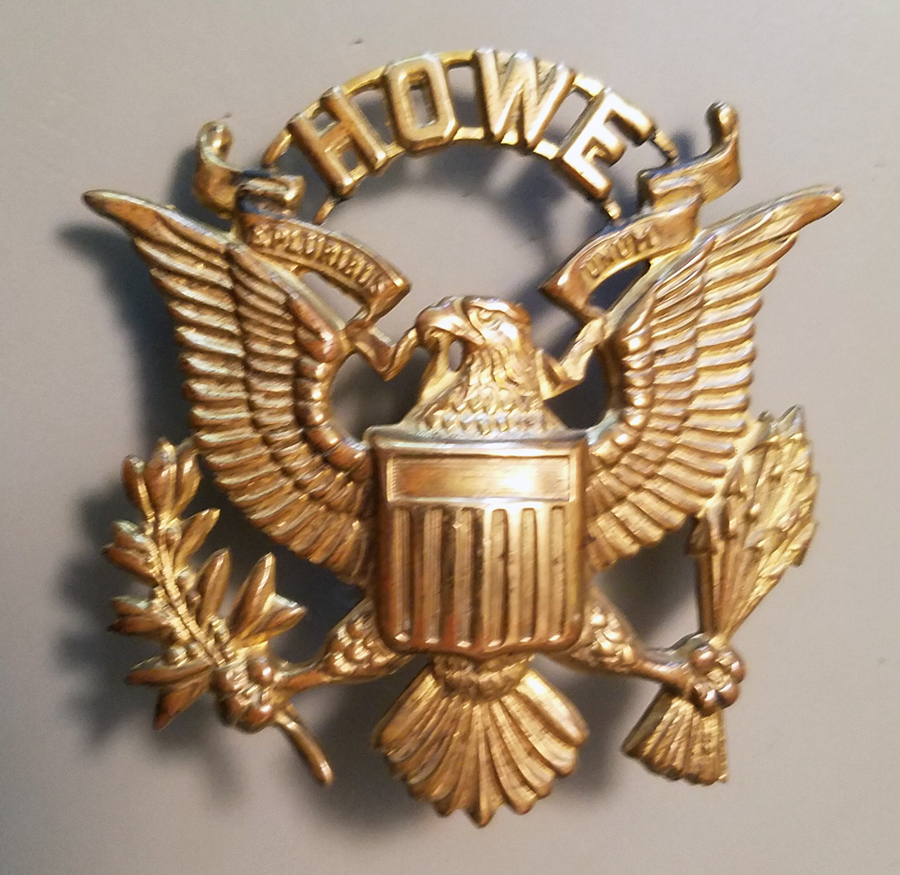
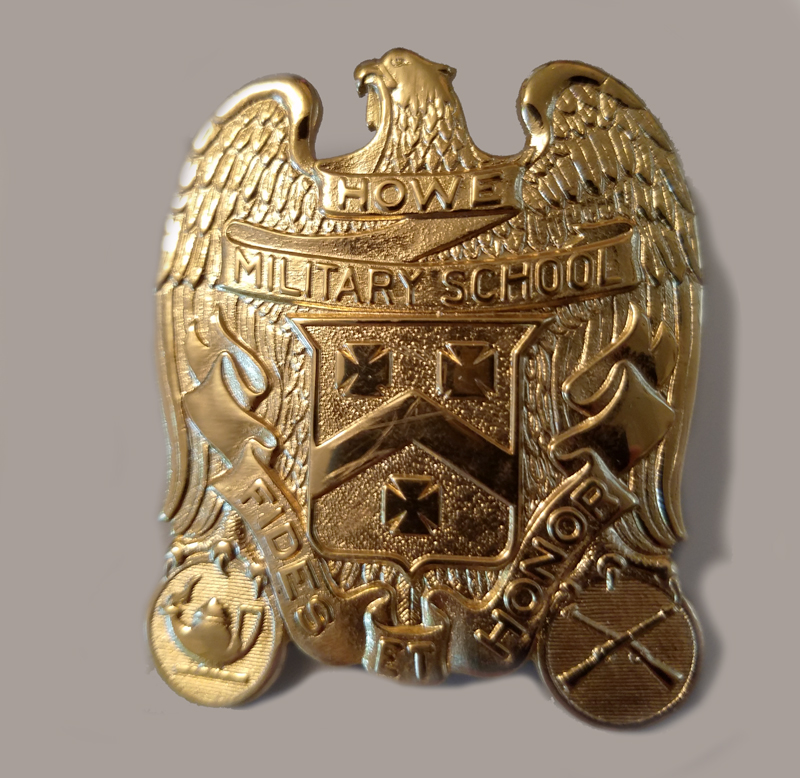
As of September 2008, Howe was one of 28 military schools in the United States, down from a high of 125 such schools.
This Association has preserved 135 years of Howe memorabilia at the Howe Alumni Club™ in Sturgis, Michigan, where some will be exhibited each year at our Annual Meeting. We have digitized many Tatler yearbooks which can be viewed online. Your donation helps fund more digitizing of both Tatlers and the School weekly paper, The Howe Herald. We also issue monthly newsletters and history notes.

Here is the oldest known Howe panorama, a double-sized postcard (2 cents!) postmarked Lima, IN, January 13, 1908, sent from Cadet Crawford Noble to his Godmother Mrs. Robert Ingle, Princeton,IN, thanking her for the book she gave him for Christmas. He is not listed in the Alumni Directory. Notice near right edge the flagpole, still there in 2023.
Howe History Stories
Notable Alumni
Web Hayes – Grandson of President Rutherford B. Hayes
William Ball – VP of the Ball Brothers Company
Thomas Parker – Inventor of the Ice Cream Drumstick
Gordon Wiles – Director of Rowan & Martin’s Laugh In
Kenneth Herrick – Chairman of Tecumseh Products
Todd Herrick – President of Tecumseh Products
Richard McCully – Federal Judge
Allen Paul – Indiana State Senator
William Frieder – Former Head Basketball Coach at the University of Michigan
Thomas Petranoff – U.S. Olympian & Former World Javelin Record Holder
Howe Military School™ Video
The mission of the Howe Military School Alumni Association, Inc., is to support the interests of Howe alumni and alumnae, friends, family, and affiliates, by preserving memorabilia, hosting events, fundraising, and connecting individuals through fellowship, so as to continue the legacy of Howe, and to make the memorabilia accessible to anyone wishing to learn about the Church-related military prep school as a method of formation for teenagers.

